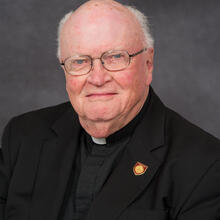Welcome to My World
Univ. of Pennsylvania Press. 244p $19.95 (paperback)
Patrick Allitt is professor of U.S. history at Emory University. He has been teaching undergraduates for more than 20 years and holds an endowed chair designated for “Teaching Excellence.” When you read his newest book you will understand why.
As the book’s subtitle indicates, the reader is invited to spend a semester in a university classroom. The class is a semester-long course titled “The Making of Modern America: 1877-2000.” In many if not most other disciplines, professors would find it hard to bare their souls, syllabi and classroom questions and answers for the general reader, no matter how excellent their courses, because of the technical content or the level of previous learning required for taking the course. In the case of U.S. history from 1877 to 2000, all of us are sufficiently informed and presumably interested enough to understand and even enjoy Allitt’s presentation.
Allitt lets the reader look over his shoulder, so to speak, as he plans the course session by session, selects the books and readings, makes up tests, assigns and grades written work and draws out students in class. “[O]ne big difference between being a student now and being a student in earlier ages,” he explains for the benefit of those not immediately engaged with the contemporary academy, “is that we no longer favor masses of rote learning.” After noting that the premium had shifted from memorization to stimulating students’ imaginations, he muses: “I wonder if the pendulum didn’t swing a bit too far. Is rote learning really so bad?” He wants to revive memory while gently discouraging rote—as the students move toward integrating creatively into a coherent whole what they have heard and read. The author reports:
I notice in the classes I teach that the students study for exams by trying to memorize as much as possible of what I have said, and that when they’re answering the essay questions they put down on paper every scrap of information they can recall, however marginal it may be to the assigned question. In other words, even in an educational culture that discourages rote learning they do it instinctively. I chide them, when returning midterms, with the remark, “You didn’t really answer the question—you just wrote down everything you knew about this subject.”
An optimistic view of students today would suggest that their speaking and writing skills are in need of repair. It is probably more accurate to say that their oral and written communication skills have not yet been developed. The kind of practice that makes perfect in this area has, in all too many secondary schools, never been required. Professor Allitt is one of those classroom professors who are taking upon themselves the task of imparting writing and speaking skills along with the regular course content in disciplines other than communications.
I’m the Teacher, You’re the Student contains entertaining battlefield reports about the author’s efforts to improve student speech and writing. There are also surprisingly frank disclosures of plagiarism and cheating in a course whose syllabus carries a top paragraph reminder of the University’s honor code.
During the semester in which the course described in this book was taught, Allitt also taught an adult education course in his local community. Teaching grown-ups, he remarks, prompts him to notice how young undergraduates take so much for granted. “They come to class, take notes, and go out again, speak if spoken to, and occasionally throw in an unsolicited remark. What many of them never show, except the handful to whom I give a lot of personal or remedial help, is gratitude.” His adult students say thanks.
Acknowledging that “the students become far more attractive with the passage of time,” Professor Allitt closes his book with these words:
It’s a great life being a professor: the benefits are major, the irritants minor. It isn’t easy keeping a distance from the students, especially in the syrupy emotional atmosphere of graduation week. The temptation to befriend the students, to yield to their pleas for better grades, and to mother them before they go out into the world is so strong that I find myself, almost, forgetting my own first rule, the one embodied in the great decree [stated and explained in the preface of the book], “I’m the teacher, you’re the student.”
This is a wonderful book, worthy of the university press that produced it and worthwhile reading for those who labor in the groves of academe. It is also a beacon for those who would be neither who nor what they are without the commitment of teachers who helped them along the way—teachers like Patrick Allitt.
This article also appeared in print, under the headline “Welcome to My World,” in the February 14, 2005, issue.








